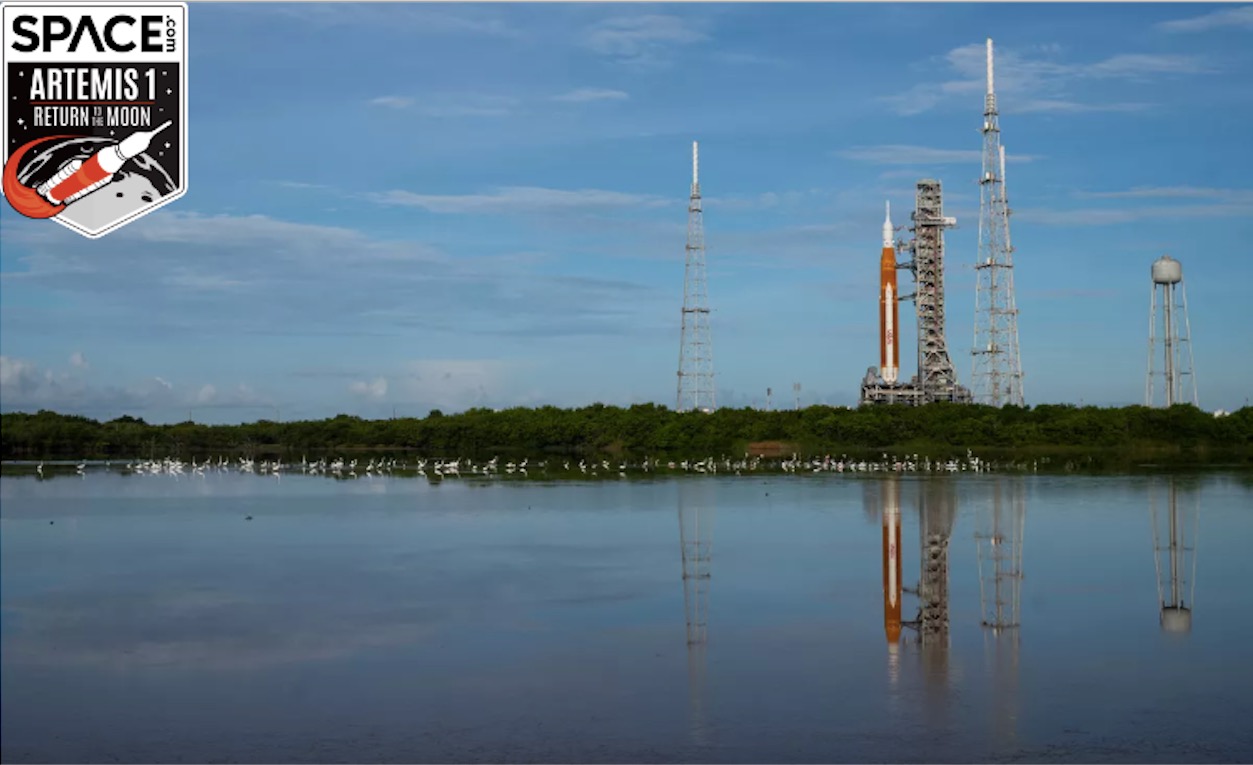NASA's Artemis 1 moon rocket passes crucial fueling test

NASA's Artemis 1 moon rocket passed a critical fueling test Wednesday (Sept. 21), potentially keeping it on track for a planned Sept. 27 liftoff.
Artemis 1 will send an uncrewed Orion capsule to lunar orbit using a giant Space Launch System (SLS) rocket. NASA tried to launch the mission on Sept. 3 but was thwarted by a leak of liquid hydrogen propellant at a "quick disconnect" on the SLS core stage, an interface linking the rocket with a fuel line from its mobile launch tower.
The Artemis 1 team replaced two seals around the quick disconnect on Sept. 9, then scheduled a fueling test to see if the fix worked. That test occurred Wednesday on Launch Pad 39B at NASA's Kennedy Space Center (KSC) in Florida, and it brought good news for the mission.
Related: NASA's Artemis 1 moon mission: Live updates
More: Artemis 1: 10 wild facts about the NASA moon mission
"All of the objectives that we set out to do we were able to accomplish today," Artemis launch director Charlie Blackwell-Thompson, with the Exploration Ground Systems Program at KSC, said in brief remarks after Wednesday's test, which took up most of the day.
That's not to say that everything went perfectly. For example, the leak at the quick disconnect popped up again during liquid-hydrogen loading. But the team managed to troubleshoot it; they warmed up the quick disconnect, allowing it to "reseat," which reduced the leak rate to acceptable levels.
Artemis 1 personnel also noticed a different hydrogen leak during a "pre-pressurization test," which was also part of Wednesday's activities. This test "enabled engineers to calibrate the settings used for conditioning the engines during the terminal count and validate timelines before launch day to reduce schedule risk during the countdown on launch day," NASA officials explained in a blog post after the test wrapped up.
Breaking space news, the latest updates on rocket launches, skywatching events and more!
This second leak was smaller than the other one, and the Artemis 1 team was able to keep it under control, agency officials said.
NASA is currently eyeing Sept. 27 as a launch target for Artemis 1, with a possible backup date of Oct. 2. It's too soon to make a formal commitment to either of those dates despite Wednesday's success, Blackwell-Thompson said.
"I think we'll take the data and we'll go see what it tells us," she said. But, she added, "I am extremely encouraged by the test today and getting through all our objectives."
Some other things have to go Artemis 1's way for the mission to launch in the next two weeks as well. The weather has to cooperate, for instance, and that's never a certainty on Florida's Space Coast. The mission must also get a waiver on the certification of its flight termination system (FTS), which is designed to destroy the SLS if it veers off course during launch.
The U.S. Space Force, which oversees the Eastern Range for rocket launches, certified Artemis 1's FTS for 25 days, and that time is now up. The mission has applied for a waiver; if it's not granted, the huge rocket will have to be rolled from Pad 39B back to KSC's Vehicle Assembly Building, the only place where recertification can occur.
"Right now, we're still in the process of having technical discussions with the Range," Tom Whitmeyer, NASA's deputy associate administrator for Common Exploration Systems Development, said during a press conference on Monday (Sept. 19), referring to the waiver situation. "It's been very productive and collaborative."
Artemis 1 has already received one such FTS waiver, which extended the certification from 20 days to 25.
If all goes well with Artemis 1, Artemis 2 will launch astronauts around the moon in 2024 and Artemis 3 will put boots down near the lunar south pole a year or two later. The Artemis program ultimately aims to establish a long-term human presence on and around the moon, and to use the skills and knowledge gained in doing so to get astronauts to Mars in the late 2030s or early 2040s.
Mike Wall is the author of "Out There" (Grand Central Publishing, 2018; illustrated by Karl Tate), a book about the search for alien life. Follow him on Twitter @michaeldwall. Follow us on Twitter @Spacedotcom or on Facebook.

Michael Wall is a Senior Space Writer with Space.com and joined the team in 2010. He primarily covers exoplanets, spaceflight and military space, but has been known to dabble in the space art beat. His book about the search for alien life, "Out There," was published on Nov. 13, 2018. Before becoming a science writer, Michael worked as a herpetologist and wildlife biologist. He has a Ph.D. in evolutionary biology from the University of Sydney, Australia, a bachelor's degree from the University of Arizona, and a graduate certificate in science writing from the University of California, Santa Cruz. To find out what his latest project is, you can follow Michael on Twitter.
